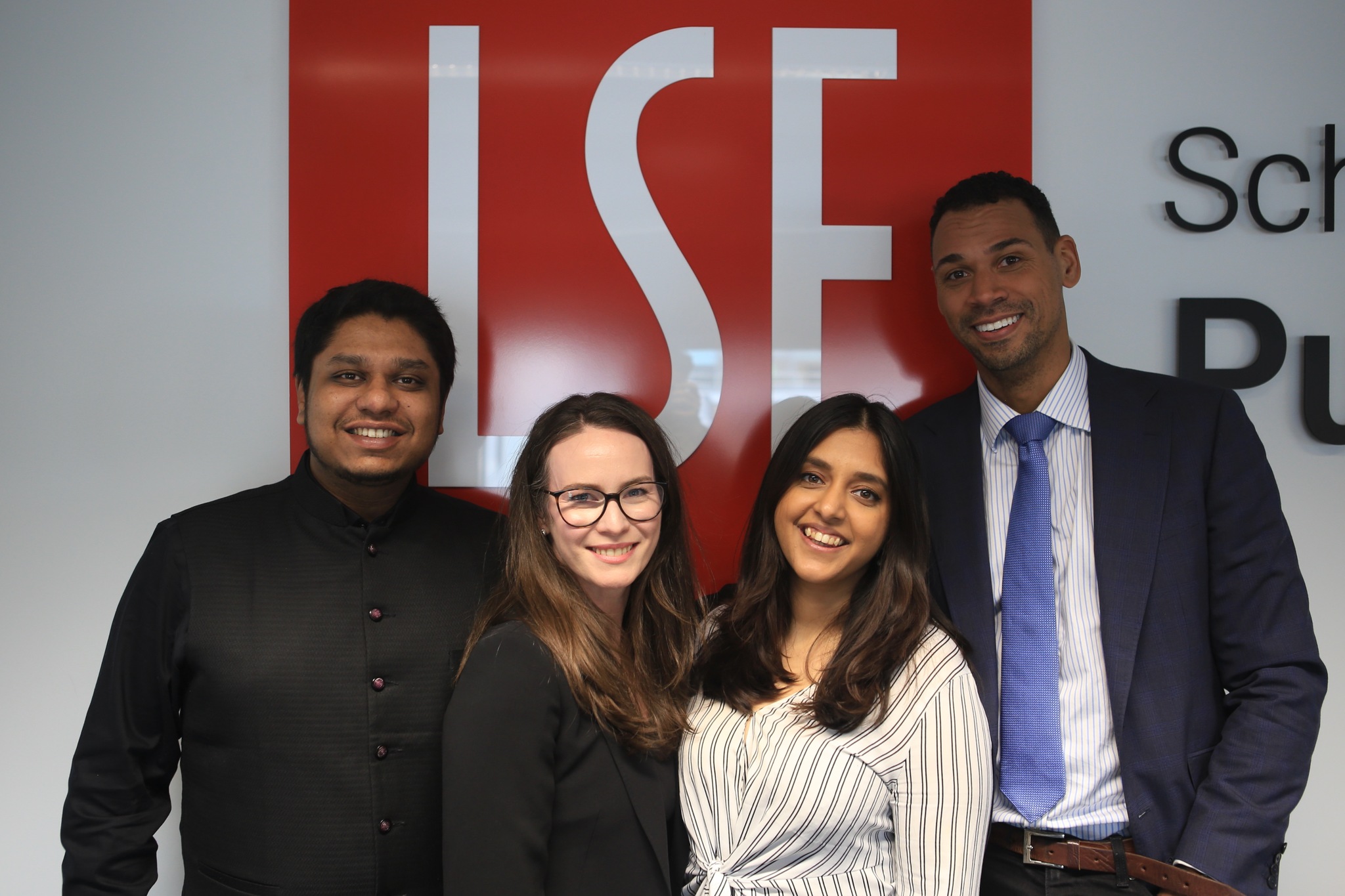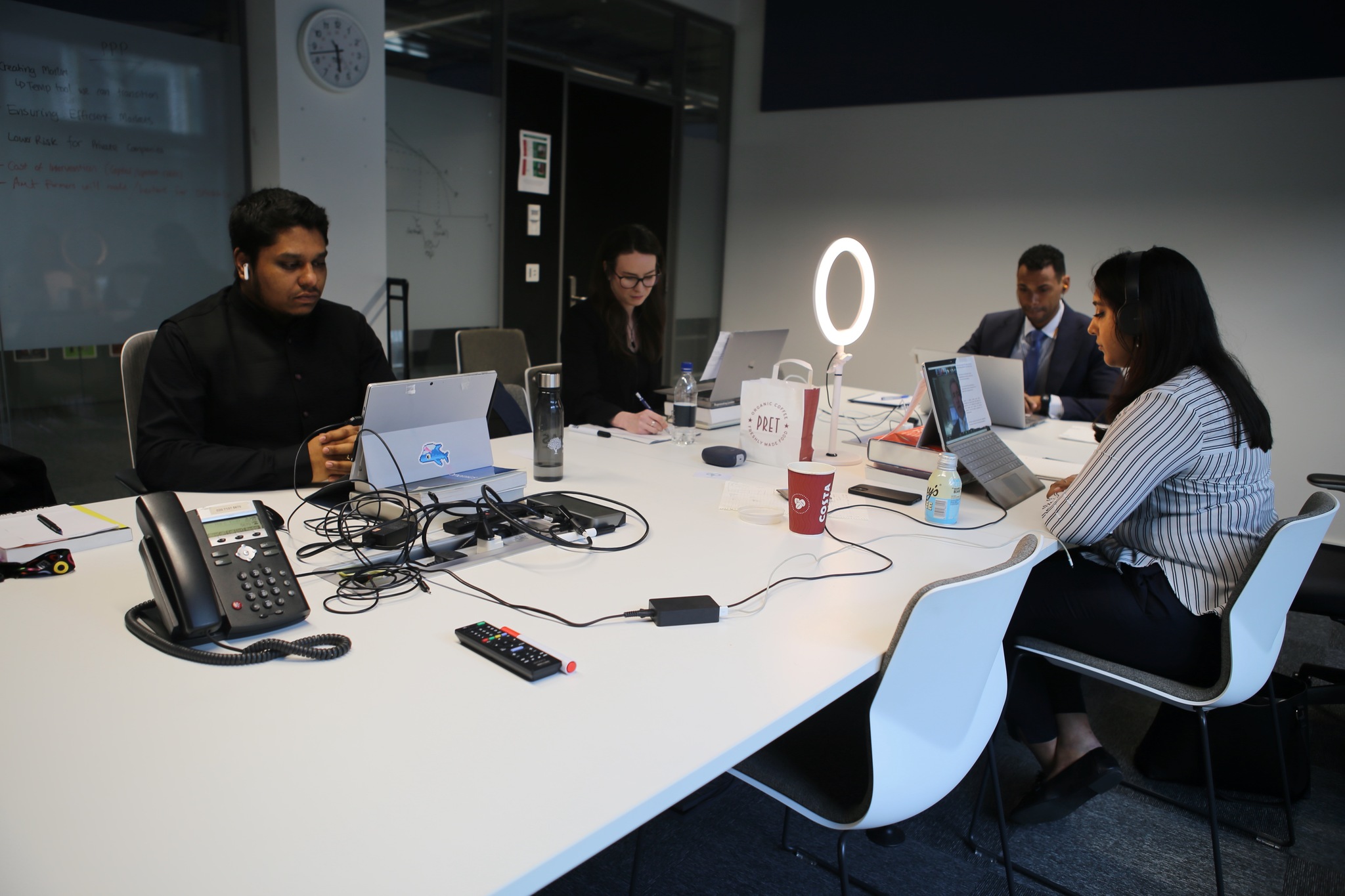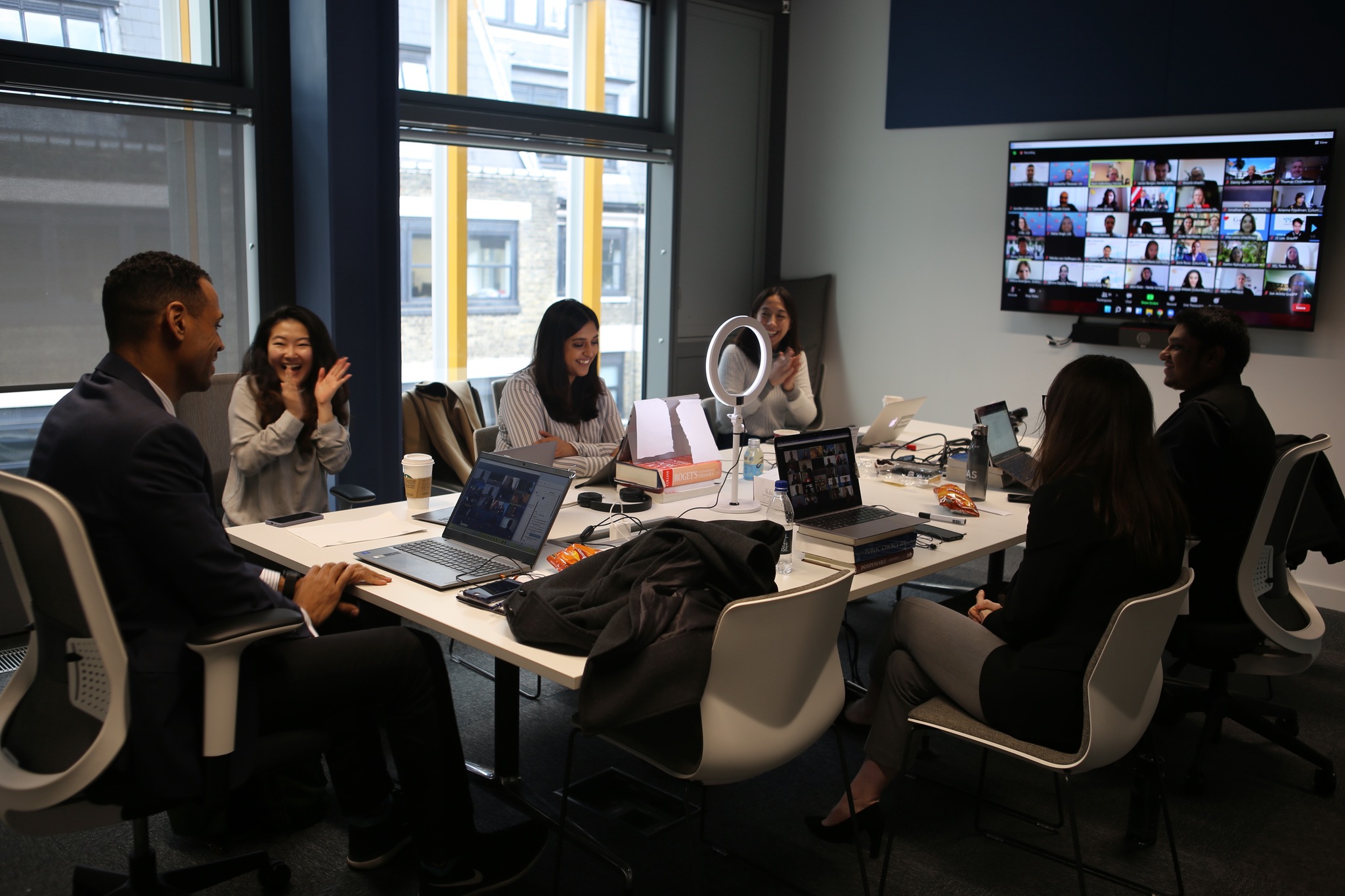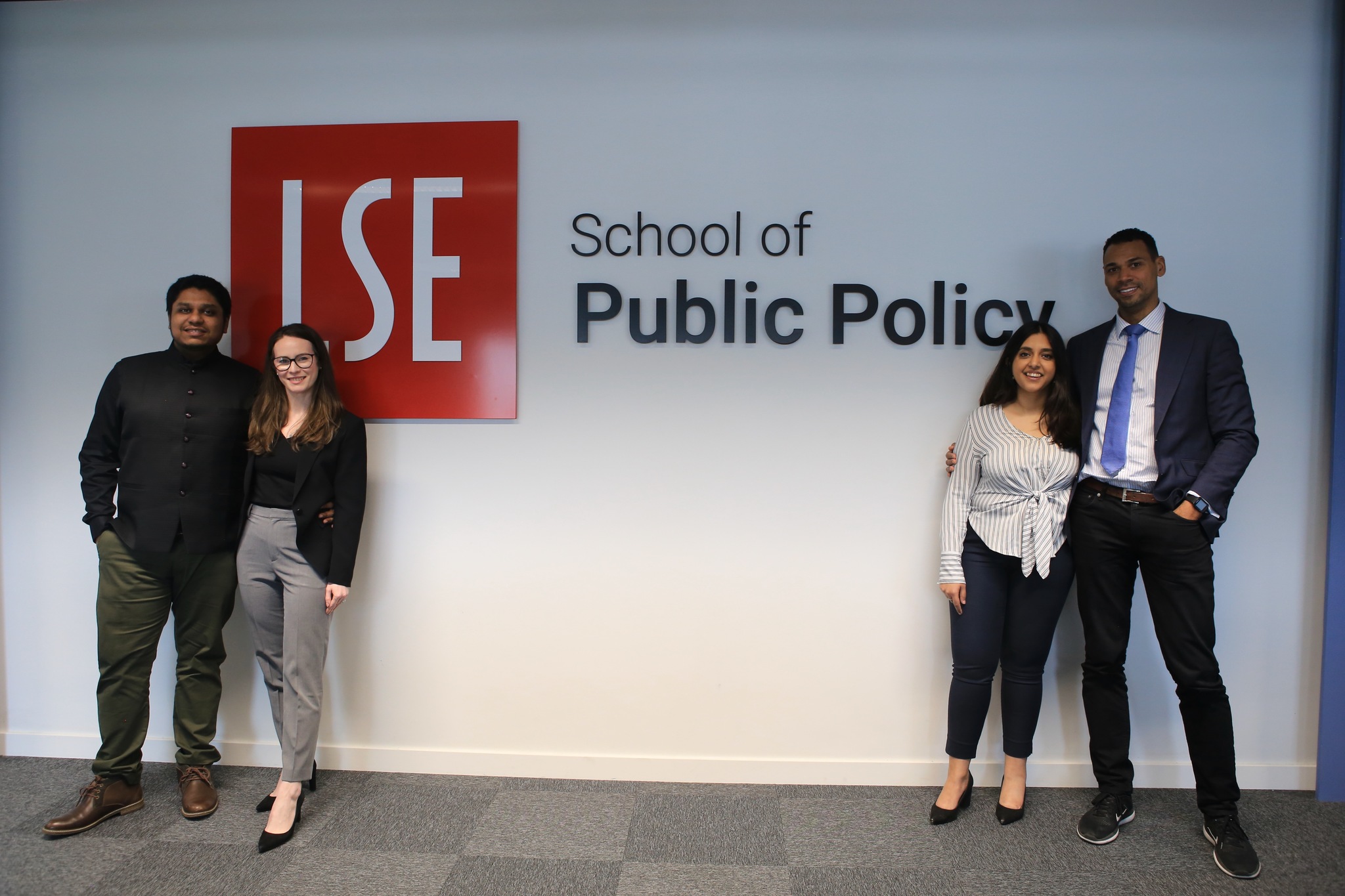
Master of Public Policy (MPP) students Jonathan Odumeru, Rachel Pilc, Nikita Singh and Sidhartha Tibrewal, were one of the selected School of Public Policy teams who took part in the Global Public Policy Network (GPPN) competition.
The competition gave twenty-eight selected teams from seven of the world’s top public policy schools the opportunity to identify and try to solve a pressing policy challenge and present their project to a judging panel comprised of senior faculty and peers as part of the annual GPPN conference.
Here the team discusses their journey from coming together to develop their initial concept to celebrating their award for best presentation and offer their advice for future participants.
What were your main highlights from your GPPN experience?
This whole experience has collectively been one of the highlights of our MPP experience, which makes it difficult to pick just one! the following moments are the ones we will remember:
- The first 10 minutes of our weekly Wednesday afternoon working session on CBG 5th Floor, would always begin with someone saying “So I was up late last night researching and I think we need to go back to the drawing board…”
- Celebrating making it through to the final round with GPPN faculty and a few of our MPP colleagues. Everyone was incredibly supportive, rolling up their sleeves to help us get ready for the final.
- GPPN undoubtedly also facilitated working on a live policy problem with a time frame closer to the real-world scenario. Especially, between round one and round two, the one-day time frame to incorporate feedback was challenging and motivating.
- The moment after we delivered our final presentation and we all came in together for a group hug. As corny as it sounds, the bonds we built with each other through this experience, surpasses colleagues and team mates and are markers of true friendship.
Can you tell us about the main theme of your project and your initial approach to identifying a policy problem?
The initial focus of our project was to address the pernicious challenge of crop stubble burning in Northern India, and its resulting effects on pollution. Our initial problem identification came from the personal experience of our team member, Sidhartha, who has seen first hand the devastating effects of stubble burning-related pollution in Delhi. As our research and thinking evolved, our project broadened to the development of a market for biomass pellets, relying on crop stubble as a primary product in the green energy generation value chain.

What steps did you take to form a solution to this problem?
We kicked off our GPPN journey by holding a few meet-ups where we talked through various wicked yet pressing problems that we had come across through our work, research, classes and experiences. We took this chance to debate possibilities of each topic, but also to get to know each other and understand our relative strengths.
Once we jointly settled on a topic, we spent a few weeks independently researching it and came together to workshop the ‘problem’. Whiteboard marker in hand, we mapped out a policy tree that reflected the status quo and identified the various points at which policy change could occur. Once we settled on the policy space in which we wanted to work we spent time debating and defining the true ‘problem’. This process was lengthy but we believe the time and effort put towards this helped us brainstorm policy solutions that would really make a difference.
The next session was spent discussing the merits of various policy options that we had brainstormed, considering the political, financial and operational constraints that could exist. Through this process we were able to down-select a single policy option. The next few months were spent developing the details for the policy solution, how it would work, what would be the benefits and trade-offs and how we would overcome the political, financial and operational barriers we identified.
The final weeks prior to GPPN were spent consolidating our compendium of research, ideas, data analysis and policy outlines into a presentation. Key to this was ensuring that we were able to communicate the gravity of the stubble burning challenge to the judges in such a way that they felt compelled to act. We also then needed to find a structured way to communicate the depth of work we had done in a way that was comprehensive yet consumable. Key to all of these steps however, was ensuring that the group felt cohesive, open-minded and determined throughout the GPPN journey.
Did you use any particular skills or learnings from your studies when identifying the problem and solution?
Absolutely! We applied a broad set of skills, focused on market forces, coordination, and political feasibility derived from our public policy focused quantitative methods, political science, public management and economics courses. In particular, identifying correlation from causation and conducting a cost-benefit analysis of various policy options was key to our robust proposal. Additionally, having written various policy memos for our MT courses helped form a nuanced understanding of consolidating the depth of research into a single page document or into a three-minute presentation. These tools enabled us to design a proposal that is consistent with Indian government policy proposals that have been announced subsequent to the development of our proposal.

How did you draw upon the different experiences of your team throughout the project?
Our team is made up of an economist, a management consultant and defense lawyer, a banking lawyer, and a litigation lawyer. This combination of backgrounds allowed us to draw upon our expertise to put forward an evidence-based policy proposal with an emphasis on clear communication - both oral and written. In particular, we leveraged our advocacy experience to deliver a sharp presentation that would appeal to everyone: from a first-year policy student to the most sophisticated of policy professionals.
What were your main challenges and learning points throughout the experience?
Our greatest challenge from an analytical perspective was finding localized data to determine the feasibility and details of our ultimate solution. Another challenge that most teams would likely encounter is finding proof of concept. These projects are by nature novel, and so finding evidence of success can be a challenge, and for us involved finding evidence of success of individual pieces of our solution, rather than the whole. Another issue that we faced with this particular topic was the abundance of demotivating research and failed solutions - a lot had been said about the ‘problem’ but much less relevant solution data to build on.
How did you use the experiences of SPP alumni and faculty to help with the project?
After identifying the problem we wanted to work on, the team approached several members of SPP faculty to assist us in better framing the issues and ensuring that our solution was defensible. In particular, Ameek Singh challenged us to make sure that we could justify our proposal from a number of different angles. Ultimately, we took his constructive feedback and changed our approach. This led to a higher quality solution and a higher quality solution and overall result. We also immensely benefited from Professor Rowley’s efforts to bring the SPP alumni together for the mock presentations.
How beneficial did you find the opportunity to connect with students and faculty from other GPPN policy schools?
Naturally, we would have liked to have traveled to Berlin to meet with other students and faculty, but this wasn’t possible due to Covid restrictions. Nevertheless, Hertie did an excellent job of connecting us with other students. SPP was also incredible with the efforts to the GPPN weekend experience wholesome with pizza night, German dinner - it gave all the participants a sense of camaraderie.

What are your top tips for preparing and delivering a successful presentation?
We learned a key tip from faculty member, Nick Rowley - the presentation is meant to entice your audience to want to hear more. For us this meant being careful to provide a few very key details and statistics in the presentation, without drowning the audience in all of the research and analysis we had performed over the previous five months. This gave us the opportunity to deliver a teaser, without compromising on the big picture, in round one. And in the second round we were able to focus on impact and feasibility, and nudged the judges to ask us about the additional details they were most interested in discussing.
What advice would you give to students who may want to take part in the GPPN competition next year?
To any group of students interested in the GPPN presentation competition, our top tips are
(a) choose a topic that you are passionate about, and hone in on a specific, digestible part of the problem;
(b) keep an open mind about potential solutions, and engage faculty early to examine your thinking, everyone’s very helpful here;
(c) use the tools of public policy that you’ve gained from your SPP courses;
(d) finding a policy solution to your pressing problem won’t be tough - you’d work that out eventually, the real challenge is to clearly communicate months of research in the stipulated time;
(e) make the process fun!
